
The Battle of Río Salado, also known as the Battle of Tarifa was a battle of the armies of King Afonso IV of Portugal and King Alfonso XI of Castile against those of Sultan Abu al-Hasan 'Ali of the Marinid dynasty and Yusuf I of Granada.

Abu Al-Hasan 'Ali ibn 'Othman, was a sultan of the Marinid dynasty who reigned in Morocco between 1331 and 1348. In 1333 he captured Gibraltar from the Castilians, although a later attempt to take Tarifa in 1339 ended in fiasco. In North Africa he extended his rule over Tlemcen and Ifriqiya, which together covered the north of what is now Algeria and Tunisia. Under him the Marinid realms in the Maghreb briefly covered an area that rivaled that of the preceding Almohad Caliphate. However, he was forced to retreat due to a revolt of the Arab tribes, was shipwrecked, and lost many of his supporters. His son Abu Inan Faris seized power in Fez. Abu Al-Hasan died in exile in the High Atlas mountains.
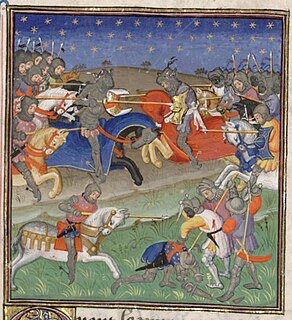
The Battle of Teba took place in August 1330, in the valley below the fortress of Teba, now a town in the province of Málaga in Andalusia, southern Spain. The encounter occurred during the frontier campaign waged between 1327 and 1333 by Alfonso XI of Castile against Muhammed IV, Sultan of Granada.

Abu al-Hajjaj Yusuf ibn Ismail, known by the regnal name al-Muayyad billah, was the seventh Nasrid ruler of the Emirate of Granada on the Iberian Peninsula. The third son of Ismail I, he was Sultan between 1333 and 1354, after his brother Muhammad IV was assassinated.
Abu Abdullah Muhammad ibn Ismail, known as Muhammad IV, was the ruler of the Emirate of Granada on the Iberian Peninsula from 1325 to 1333. He was the sixth sultan of the Nasrid dynasty, succeeding to the throne at ten years old when his father, Ismail I, was assassinated.
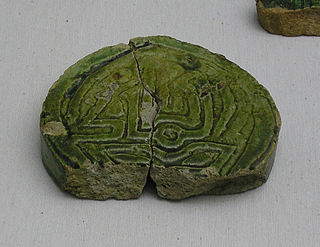
The Battle of Algeciras was a naval battle which occurred on July 25, 1278. The battle pitted the fleets of the Kingdom of Castile, commanded by the Admiral of Castile, Pedro Martínez de Fe, and the combined fleets of the Marinid dynasty and that of the Emirate of Granada, commanded by Abu Yaqub Yusuf an-Nasr. The battle was fought in the context of the Moorish naval expeditions to the Iberian Peninsula. The battle, which took place in the Strait of Gibraltar, resulted in a Muslim victory.

The Siege of Algeciras was the first of many sieges of the city by Christian forces in the lengthy period of the Spanish Reconquista. The siege, ordered by King Alfonso X of Castile also known as "el Sabio", was a fruitless military campaign initiated by the Kingdom of Castile with the objective of removing the Benimerins from Algeciras. The siege on Algeciras, then known to the Muslims as Al-Jazira Al-Khadra, was strategically important because Algeciras had been at the time the main fortress and landing place for African reinforcement troops in the Iberian Peninsula. Castile, which had a powerful armada of ships anchored in the Bay of Gibraltar to blockade such reinforcement, had a few days previously to the siege, seen that fleet obliterated by the Muslim admiral, Abu Yusuf Yaqub at the Naval Battle of Algeciras.
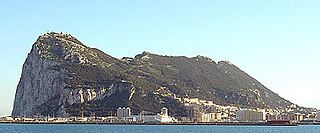
The First Siege of Gibraltar was a battle of the Spanish Reconquista that took place in 1309. The battle pitted the forces of the Crown of Castile under the command of Juan Núñez II de Lara and Alonso Pérez de Guzmán, against the forces of the Emirate of Granada who were under the command of Sultan Muhammed III and his brother, Abu'l-Juyush Nasr.
Fernando Gutiérrez Tello was a Spanish noble in the service of the Kingdom of Castile. He was the archdeacon of the Archdiocese of Seville from 12 April 1304 to 23 April 1323. He is best known for his command over the Castilian forces in Ferdinand IV's campaign against the Emirate of Granada in 1309 in the context of the Spanish Reconquista. Most notably, he commanded Castilian troops in the Siege of Gibraltar along with Juan Núñez II de Lara, Alonso Pérez de Guzmán and Garci López de Padilla, the Grand Master of the Order of Calatrava. Together, the group took control of the city of Gibraltar from the Moors on 12 September 1309. Gutiérrez Tello was also part of the less successful siege on Algeciras of that same year.

The history of Moorish Gibraltar began with the landing of the Muslims in Hispania and the fall of the Visigothic Kingdom of Toledo in 711 and ended with the fall of Gibraltar to Christian hands 751 years later, in 1462, with an interregnum during the early 14th century.
The Ninth Siege of Gibraltar was a fifteen-month-long siege of the town of Gibraltar that lasted from 1466 until 1467. The siege was conducted by Juan Alonso de Guzmán, the 1st Duke of Medina Sidonia, and resulted in a takeover of the town, then belonging to the Crown of Castile. Unlike other sieges of Gibraltar, which were the result of clashes between different powers, this was a purely internal struggle between rival Castilian factions.
The Third Siege of Gibraltar was mounted between February–June 1333 by a Moorish army under the prince Abd al-Malik Abd al-Wahid of Morocco. The fortified town of Gibraltar had been held by Castile since 1309, when it had been seized from the Moorish Emirate of Granada. The attack on Gibraltar was ordered by the recently crowned Marinid ruler Abu al-Hasan Ali ibn Othman in response to an appeal by the Nasrid ruler Muhammed IV of Granada. The onset of the siege took the Castilians by surprise. The stocks of food in Gibraltar were heavily depleted at the time due to the thievery of the town's governor, Vasco Perez de Meira, who had looted the money that was meant to have been spent on food for the garrison and to pay for the upkeep of the castle and fortifications. After over four months of siege and bombardment by Moorish catapults, the garrison and townspeople were reduced to near-starvation and surrendered to Abd al-Malik.
Abu Malik Abd al-Wahid was a son of the Marinid sultan of Morocco, Abu al-Hasan Ali ibn Othman. Although he had lost an eye, Malik was a capable military commander and served as governor of Algeciras and the Marinids' principal general in Al Andalus. He captured Gibraltar from Castile in June 1333 and participated in his father's campaign against rebels in the Kingdom of Tlemcen the following year. He was killed by Castilian forces in 1339 after being ambushed on the way back from a raid against the Castilian-held town of Jerez de la Frontera.

The Fifth Siege of Gibraltar, mounted between August 1349 and March 1350, was a second attempt by King Alfonso XI of Castile to retake the fortified town of Gibraltar. It had been held by the Moors since 1333. The siege followed years of intermittent conflict between the Christian kingdoms of Spain and the Moorish Emirate of Granada, which was supported by the Marinid sultanate of Morocco. A series of Moorish defeats and reverses had left Gibraltar as a Moorish-held enclave within Castilian territory. Its geographical isolation was compensated for by the strength of its fortifications, which had been greatly improved since 1333. Alfonso brought an army of around 20,000 men, along with his mistress and their five illegitimate children, to dig in to the north of Gibraltar for a lengthy siege. In the New Year of 1350, however, bubonic plague – the Black Death – broke out in the Castilian camp. Alfonso refused to abandon the siege but fell victim to the plague on 27 March 1350, becoming the only monarch to die of the disease.
The Sixth Siege of Gibraltar in 1411 was the only occasion on which control of Gibraltar was contested between two Islamic powers. After the failed Fifth Siege of Gibraltar in 1349–50, which ended with the death of King Alfonso XI of Castile from bubonic plague, the Kingdom of Castile was preoccupied with the Castilian Civil War and its aftermath. In 1369, Sultan Muhammed V of Granada took advantage of the Castilians' distractions and in the Siege of Algeciras (1369) he seized the city of Algeciras, on the west side of the Bay of Gibraltar, which Alfonso XI had captured in 1344. After razing it to the ground he made peace with Henry II, the winner of the civil war. The truce was renewed by Henry's successors John I and Henry III. At some point during the truces, control of Gibraltar was transferred from the Marinid dynasty of Morocco, which had held it since 1333, to the Granadans. It is not clear why this happened; it may have been as a condition of the Granadans assisting the Marinids against rebels in Morocco.
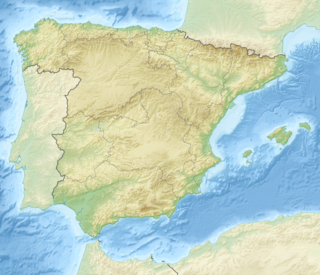
The Eighth Siege of Gibraltar (1462) was a successful effort by soldiers of the Kingdom of Castile to take the fortified town of Gibraltar from the Moors of the Emirate of Granada. Capture of this position, which was weakly defended and was taken with little fighting, was strategically important in the final defeat of the Moors in Spain.
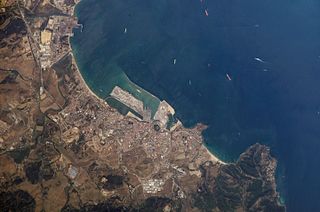
The Siege of Algeciras (1342–44) was undertaken during the Reconquest of Spain by the Castillian forces of Alfonso XI assisted by the fleets of the Kingdom of Aragon and the Republic of Genoa. The objective was to capture the Muslim city of Al-Jazeera Al-Khadra, called Algeciras by Christians. The city was the capital and the main port of the European territory of the Marinid Empire.

The Siege of Algeciras (1369) was undertaken during the period of the Reconquest of Spain by Muhammed V, Sultan of Granada to reclaim the city of Al-Hadra Al-Yazirat, called Algeciras by the Christians, in the Kingdom of Castile. The siege lasted just three days, and the sultan was victorious. The Muslims thus regained a major city which had been in Castilian hands since Alfonso XI of Castile took it from the Moroccans after the long 1342-1344 siege. Ten years after the capture of the city, in 1379 the sultan of Granada decided to completely destroy the city to prevent it falling into Christian hands. It was impossible to defend the place at a time when the Muslim kings of the Iberian Peninsula had lost much of military power they enjoyed in earlier centuries.













